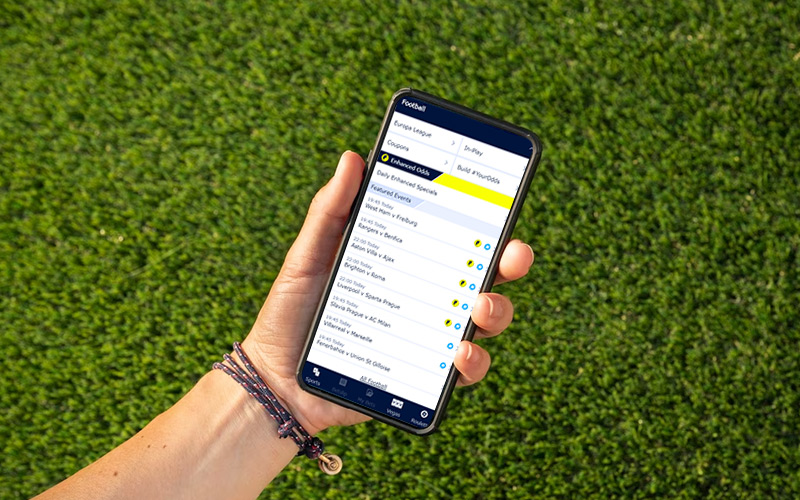Prediction Markets: When the Sportsbook Needs to Move
Prediction markets promise pricing that moves with information, not just a bookmaker’s margin. They also invite new gatekeepers, because the rules look less like gaming and more like finance. The result is a contested frontier where sportsbooks experiment with trading rails while exchanges flirt with entertainment.
The stakes are not small. Distribution, regulation, and liquidity will decide who leads. Gaminator wants to consolidate all the information and explain why leading brands test trading-first models. Our experts help you discover the best way to capitalise on the new format and keep your current audience engaged.
Definition and Function

Prediction markets look familiar to anyone who has seen a price chart. Instead of odds set by a bookmaker, the crowd discovers a cost that mirrors belief about a future event.
How these markets operate:
Price as Probability
Each contract trades between $0 and $1. The quote reflects the crowd’s assessment of the likelihood of the outcome at that moment. A $0.60 price implies a 60% chance, as seen by the market.
Settlement Logic
When the event is resolved, contracts on the true outcome pay out $1. All opposing positions are worth 0. Payout is binary, but paths to that finish line differ for traders who enter at different prices.
Trading up to the Event
Positions can be opened or closed until a resolution is reached. Participants lock in gains or cut losses as new information arrives. Intraday moves often track news, rumours, and changing sentiment.
P2P, Not The House
You face other participants instead of the bookmaker’s balance sheet. The platform matches buyers and sellers and publishes the price. That structure removes the overround setting and puts discovery in the hands of the crowd.
Fees and Liquidity
The venue charges a small commission to cover its operating costs. Liquidity depends on active users and market-makers who post quotes. Deeper books mean tighter spreads and easier entry and exit for larger tickets.
The Boundary of Betting and Investing
The line between a wager and a trade is thinner than it seems. People price uncertainty every day, even if they never open a chart. You glance at the forecast and decide whether to take an umbrella. You check traffic patterns before you leave for the airport. Each choice is a small probability call.
Regulation draws the harder distinction. Lawmakers placed sports betting under gaming rules, while financial speculation sits with market supervisors. Behaviour, however, often looks the same. One person buys exposure to a season-long team outcome. Another purchases an option that rises or falls with a single headline. These are different wrappers, but similar risk logic.
This is the conversation that prediction venues bring to the surface. They package probability as a simple price and let the crowd update it as information arrives. That structure feels closer to markets than to games of chance. It is also why financial-style oversight becomes part of the story as the category grows.
Licensing defines who can operate and where they can operate. In the United States, sports betting falls within a patchwork of state rules, taxes, and local regulations. Prediction venues built under financial law follow a different path, with national supervision and niche-style compliance.
The regulatory angle changes the market in several ways:
- Wider reach under federal supervisors. A CFTC-approved model can, in principle, serve users across multiple states, offering distribution that a state-by-state sportsbook cannot match.
- Product design focused on pricing and forecasting. Rules favour instruments that encode probability and settle on facts, not random number generators, which steer builders toward markets rather than games.
- Institutional plumbing and liquidity. Financial compliance frameworks, including market-makers, reporting standards, and surveillance tools, can help tighten spreads and support higher limits.
Big brands see an opening that aligns with their strengths. They have traffic, data, and risk teams, but growth inside the state-by-state sportsbook box is slowing. A trading-first product, like FanDuel’s pilot with CME Group, offers a fresh track with different rules and a broader reach.
The move makes strategic sense:
- bypasses fragmented state regimes with federally supervised instruments;
- reuses pricing engines, quant talent, and user funnels already in place;
- gains leverage in talks with states on tax and compliance burdens;
- starts with mainstream assets to build trust before sport-adjacent markets;
- attract sharper users with deeper liquidity and transparent price discovery.
Format Rivalry
The field is filling up, but the advantages differ by heritage. Some teams own the audience. Others own the plumbing. A few sit in the middle with lean products and hard-won licences.
Main groups and how their strengths and weaknesses line up in practice:
iGaming Giants (FanDuel, DraftKings)
Distribution is their edge. They own large, loyal audiences and polished funnels. The drawback is inertia, as compliance layers, brand risk, and product committees slow down rollouts. If they pair with credible liquidity partners, they can establish the default user experience for mainstream users.
Financial and Exchange Players (CME, Kalshi, Robinhood)
Licences, surveillance, and matching engines are in their DNA. They understand market plumbing and settlement. What they lack is entertainment craft and lifetime value tactics common in sportsbooks. Success depends on packaging price discovery in a friendly, low-friction interface.
Crypto Platforms (Polymarket, Crypto.com)
They bring 24/7 rails, global communities, and a tolerance for novelty. Onboarding and fiat access remain hurdles in many regions. If they solve payments and compliance without losing speed, they can lead niche categories and headline-driven events.
Specialist Startups (Profit, Sporttrade, Novig)
Focus is their strength. Teams built matching engines, connected liquidity, and learned hard regulatory lessons early. They move quickly and ship features others avoid. The path to scale likely runs through partnerships or M&A with owners of distribution or niche-making firepower.
Market Size Logic

The new format is unlikely to compete for sportsbook turnover, as trading on outcomes attracts a different crowd. Finance-minded users, news traders, and data hobbyists rarely touch a bet slip. That is why the audience is mainly different, which adds fresh liquidity and raises the ceiling for high-limit play.
Sharp bettors who left due to limits and quick restrictions find a more neutral venue in market models. Price discovery becomes the product, so informed flow is not treated as a threat. That change widens participation and supports deeper books.
New formats also open cross-sell paths. A user who tracks earnings odds or policy votes may click into season-long sports contracts, while a sportsbook regular might sample macro or entertainment markets during off-days. The pie grows because motivations differ, even when the interface looks familiar.
Some teams did not scale fast, but they learned to endure. They tried exchange-style sportsbooks, then switched to sweepstakes to keep cash flow and staff. That detour looked like a retreat at the time. In fact, it preserved codebases, licences, and operational capabilities.
Now, a new lane is opening that fits the tooling. Matching engines, KYC flows, and market-making links move cleanly into forecasting products. They can ship faster because the groundwork is already in place. Investors often refer to this as “optionality,” but on the ground, it feels like simple resilience that turns into a matter of timing luck.
There is also a brand story here. Firms that survived tough cycles earned credibility with partners and regulators. When distribution giants look for nimble technology, these survivors sit near the top of the shortlist.
The category feels exciting, but a consensus is already forming. When a theme dominates panels and newsletters, the early stage window usually narrows. Capital still matters, yet the edge now comes from distribution, liquidity ties, or regulatory know-how rather than a fresh pitch deck.
The most realistic paths for investors:
- Favour later-stage traction over seed hype. Back teams with live volumes, liquidity partners, and repeat user cohorts instead of slogans.
- Bring more than money. Offer market-making capacity, data feeds, or compliance support that unlocks products at scale and shortens time to liquidity.
- Plan entries with discipline. Avoid peak-valuation cycles driven by conference buzz and enter after proof points, or during quieter build phases when pricing is more reasonable.
What Happens Next
The category is early, so form will follow constraints. Builders will keep close to forecasting logic and avoid anything that resembles pure chance. Interfaces will lean on familiar sportsbook flows but will continue to run market mechanics in the meantime.
Realities to expect:
- forecasting-first feature sets, not RNG additions;
- sportsbook-style UX with order-book configurations;
- liquidity partnerships and market-maker deals;
- “safe” launch markets first (commodities, macro, major events, etc.);
- compliance tooling, surveillance, and clear audit trails;
- onboarding that explains pricing, settlement, and risk in plain language.
A gradual convergence is the most likely outcome. Sportsbooks will borrow exchange mechanics to improve pricing and limits, while market venues will learn entertainment streamlining to keep casual users engaged. The firms that align liquidity, compliance, and distribution and do not confuse the customer will set the pace.
The Main Things about Prediction Markets in 2025
Two worlds of entertainment-driven betting and price-driven trading are moving closer. The next phase rewards operators and builders who make probability intuitive and keep oversight and liquidity front and centre.
Key essentials to remember about the format:
- Distribution and configuration win together since an audience without liquidity or liquidity without an audience stalls growth.
- Financial supervision enables a wider reach and pushes products into forecasting rather than chance.
- Bookmakers adopt trading rails to ease regulatory friction and diversify revenue beyond state borders.
- Category expansion attracts finance-minded users and draws sharp bettors to expand the overall pie.
- Survivors with working engines, licences, and teams convert resilience into a first-mover advantage.
Check the information used to contact us carefully. It is necessary for your safety.
Fraudsters can use contacts that look like ours to scam customers. Therefore, we ask you to enter only the addresses that are indicated on our official website.
Be careful! Our team is not responsible for the activities of persons using similar contact details.



